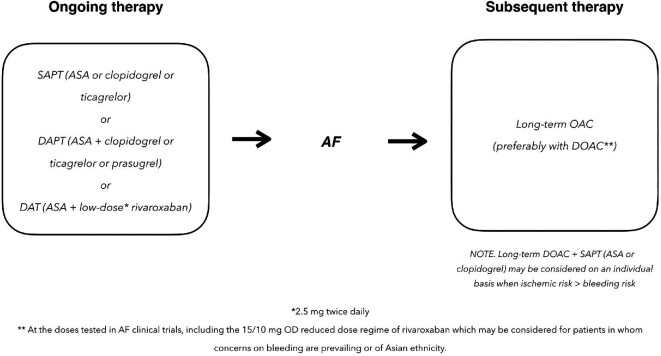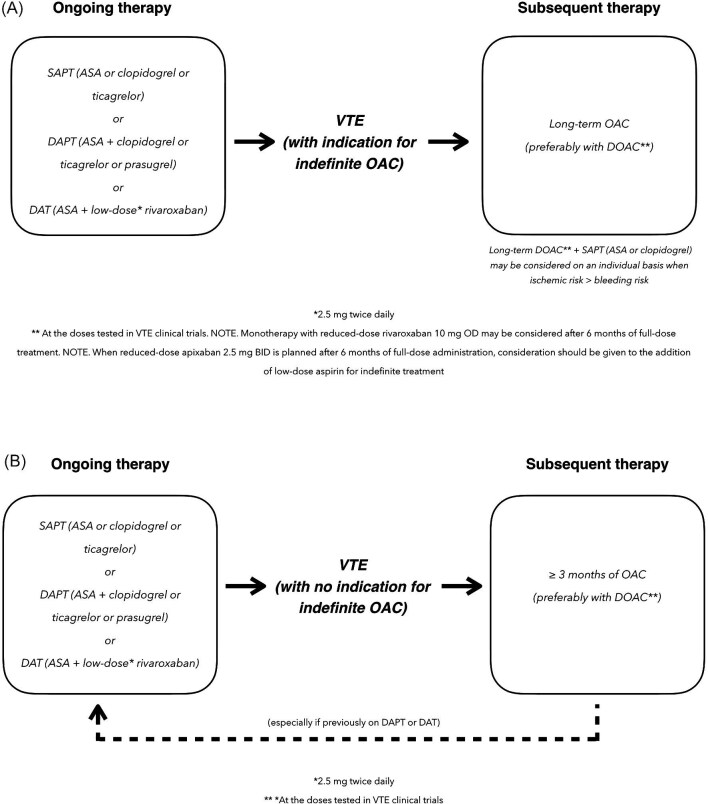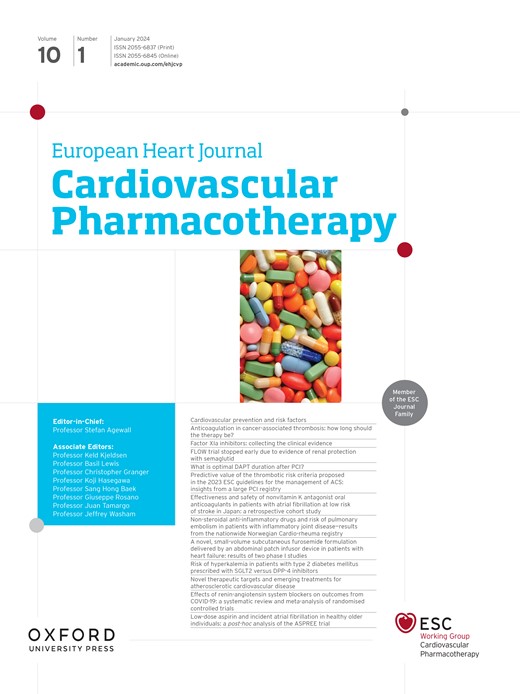Chronic coronary syndrome and new-onset atrial fibrillation or venous thromboembolism: how best to manage antithrombotic therapy strategies.
IF 6.1
1区 医学
Q1 CARDIAC & CARDIOVASCULAR SYSTEMS
European Heart Journal - Cardiovascular Pharmacotherapy
Pub Date : 2025-08-12
DOI:10.1093/ehjcvp/pvaf021
引用次数: 0


慢性冠状动脉综合征和新发心房颤动或静脉血栓栓塞:如何最好地管理抗血栓治疗策略。
经皮冠状动脉介入治疗(PCI)后处于慢性期的房颤(AF)或静脉血栓栓塞(VTE)患者的抗血栓治疗(AT)方案,无论是选择性的还是急性冠状动脉综合征(ACS)的患者,即分别在6个月和12个月后,目前都是标准化的。相反,对于相反的临床情况,没有具体的数据或试验证据,即慢性冠状动脉综合征(CCS)患者接受长期抗血栓治疗(单抗或双抗血小板治疗或阿司匹林和低剂量利伐沙班双重抗血栓治疗),发生房颤或静脉血栓栓塞,因此需要口服抗凝剂(OAC),特别是直接口服抗凝剂(DOAC)。本文总结了目前对房颤和静脉血栓栓塞合并CCS患者的AT治疗建议,并提出了适用于新发房颤或静脉血栓栓塞合并CCS患者的AT治疗方案的管理策略(有或没有无限期OAC指征)。
本文章由计算机程序翻译,如有差异,请以英文原文为准。
求助全文
约1分钟内获得全文
求助全文
来源期刊

European Heart Journal - Cardiovascular Pharmacotherapy
Medicine-Cardiology and Cardiovascular Medicine
CiteScore
10.10
自引率
14.10%
发文量
65
期刊介绍:
The European Heart Journal - Cardiovascular Pharmacotherapy (EHJ-CVP) is an international, peer-reviewed journal published in English, specifically dedicated to clinical cardiovascular pharmacology. EHJ-CVP publishes original articles focusing on clinical research involving both new and established drugs and methods, along with meta-analyses and topical reviews. The journal's primary aim is to enhance the pharmacological treatment of patients with cardiovascular disease by interpreting and integrating new scientific developments in this field.
While the emphasis is on clinical topics, EHJ-CVP also considers basic research articles from fields such as physiology and molecular biology that contribute to the understanding of cardiovascular drug therapy. These may include articles related to new drug development and evaluation, the physiological and pharmacological basis of drug action, metabolism, drug interactions, and side effects.
 求助内容:
求助内容: 应助结果提醒方式:
应助结果提醒方式:


